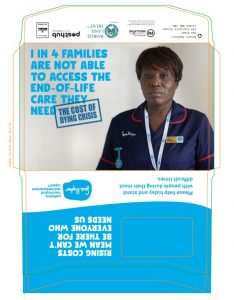
Ipek Aykut: Insights into social media use among French associations & foundations
June 28, 2023
Charlène Petit: The New Deal of Digital, AI & the Donor Experience – & how to survive it
October 4, 2023Direct mail is a tangible and engaging channel for charities to tell their stories through but getting the strategy and creative right is critical to success. Senior individual giving manager at Sue Ryder in the UK, Sam Slough shares tips and lessons learned from their own successful direct mail programme.
In the UK, recent research by JICMAIL shows that 95% of consumers engaged with direct mail in the first quarter of 2023, highlighting the important opportunity the channel offers for charities to build long-lasting relationships with supporters.
At Sue Ryder, which provides palliative, neurological, and bereavement support, we have found it has the highest response rates and can drive action other channels simply can’t, whether that’s getting supporters to donate, encouraging pledges or even increasing engagement. In fact, our Christmas 2022 mail campaign saw a donation response rate that was nearly 1300% higher than our Christmas email campaign.
To ensure your appeals work as hard as they can to deliver powerful, important messages which stay with supporters, here are some tips.

- Target your audience
Maximising your return on investment is crucial to an appeal’s success.
One of the main advantages of direct mail is that your audience can be carefully curated, using specific selection criteria. Using demographics, location and giving history to segment your data and then only mailing segments that you know are likely to respond will ensure that you don’t waste vital funds.
In 2023, Sue Ryder started to move towards a data-led approach with mailing selections. This shift away from the ‘scattergun’ approach of mailing people on our database (some of whom were unlikely to reply!) has increased response rates. We undertake segment analysis at the end of each appeal so we are clear on expected response rates and average gifts, and more importantly, net income and return on investment. This allows us to effectively plan for future campaigns and predict income levels. Removing segments that have a net income we don’t see as viable allows us to invest in other areas, such as cold acquisition of supporters to build up our cash audience.
Our recent emergency Cost of Dying appeal in June focused on the difficulties facing hospices in the UK during the cost-of-living crisis. Sue Ryder is seeing around a 20% increase in the cost of providing palliative and bereavement care, yet our funding has increased by less than 3%. We wanted to create an urgent multi-channel campaign, including direct mail, to appeal to our donors during this ‘Cost of Dying crisis’. As net income was an important factor in our consideration, we analysed our latest direct mail segmentation to assess where we’d likely see a negative net income. We then compared these figures to cold direct mail list projections and decided to remove segments with a predicted lower net income. This enabled us to spend where we felt would bring in the greatest return.
- Create a relevant, eye-catching letter
Another vital consideration is the pack the audience will receive. Your storytelling matters here.
To drive response, you’ll need to concisely demonstrate the problem, solution, and impact. For our Cost of Dying appeal, we wanted to demonstrate the problem in a powerful, impactful way. We chose to use statistics on the cost of care increasing by 20% and our funding increasing by less than 3% side-by-side. Highlighting these statistics using bold capitals made the problem immediately clear. We then emphasised the solution throughout the pack. On the reverse of the donation form, we included the problem “More people than ever need our help. But costs are rising all the time” and the solution “Please donate today to help us get through this Cost of Dying crisis” as coloured headings to make it clear how supporters could help.
 Whether you’re using a creative agency or creating the pack in-house, you’ll need to carefully consider every part of it – from the envelope to the copy, and the photos. Sue Ryder used eye-tracking software on the first version of the Cost of Dying pack to ensure it was working as hard for us as it could. It showed that reader’s eyes were drawn to the hard-hitting statistics and the donation requests. We also used emotive photos of real Sue Ryder nurses, looking straight at the camera for maximum impact.
Whether you’re using a creative agency or creating the pack in-house, you’ll need to carefully consider every part of it – from the envelope to the copy, and the photos. Sue Ryder used eye-tracking software on the first version of the Cost of Dying pack to ensure it was working as hard for us as it could. It showed that reader’s eyes were drawn to the hard-hitting statistics and the donation requests. We also used emotive photos of real Sue Ryder nurses, looking straight at the camera for maximum impact.
Finally, try to use fixing points wherever possible, from putting wording in bold, underlining or bullet points to highlight the important information. This is what the donor will read first, so ensure these tell the full story whilst creating enough intrigue for them to continue reading the entire pack. And always use a P.S – this is where eyes will be drawn first!
- Try to personalise as much as possible within the letter
The beauty of direct mail for charities is the ability to reach thousands of people with one letter. However, this can be a downfall if donors feel they’re just receiving a mass marketing letter. That’s why personalisation is vital to your appeal’s success.
Taking a personalised approach will strengthen the relationship between your charity and the supporter. Utilise as much data as you have on them to make the appeal as unique to them as possible – referencing their previous support, using variable prompting and their location (if relevant) will allow them to connect more with the appeal.
For our Cost of Dying appeal, we had variable copy for different groups of supporters, including our mid-value supporters, regular givers, and lapsed donors. This allowed us to reference their type of previous support, acknowledging that we were aware of what they’d previously done for the charity. Variable prompting was also key to the appeal’s success – we used gift prompting that was relevant to the last gift they had given. Finally, we utilised their location to reference their local hospice. The combination of this personalisation led to great success for the campaign, reaching our overall Week 12 target at Week 5.
If your charity has the resource, you could also consider hand-writing parts of the appeal, for example, the envelope address or even a compliment slip within the pack for your top donors. We tried this for the first time in Spring 2023 for one of our twice-yearly newsletters by hand-writing envelopes to our mid-value donors. We were expecting a slight uplift, but we saw a 42% increase in our budgeted income from the segments that received these envelopes. This cemented the theory that our mid-value donors appreciate a personal approach from us.
- Develop your call to action
The next step is to ensure your solution is as simple as possible. Your call to action has to be clear, concise and compelling.
Your audience need to know what they can do, right at the very moment they receive the letter. They can donate to help hospices. They can vote for your charity. They can give you their email address. Let them know what they need to do in a clear, simple way.
Repeat your call-to-action throughout the mailing. We asked supporters for a donation four times in the double page letter for the Cost of Dying appeal, with further requests on the footer of the letter and within the donation form. We also ensured that despite there being one ask (to donate), we offered multiple ways for the supporter to do this: via post, phone or online. This allows people to respond to your call-to-action in the most convenient way for them, removing barriers.
Most importantly, when offering the solution, you also need to provide donors with information on the impact this solution will have – the more tangible the better. Using shopping lists on the pack is the most common way to do this for appeals, providing detailed information on what different amounts could achieve. Our Cost of Dying pack was no exception. We were fortunate to have a very tangible ask amount of £25, which could provide an hour of care. This was highlighted in the pack and helped donors understand where their money could be spent.
- Test, test, test!
The only way to improve your appeals is to find out what works best for your donors (and what doesn’t!). A common mistake is relying too heavily on internal opinions about creative – it’s important to remember that only your audience can let you know what they will respond to.
This is where you’ll need to be as data-led as possible. Split your segments so that similar audiences receive different packs to assess where response is stronger. Using A/B testing is the easiest way: simply split your segments in half and send different versions of the pack to each one. When we were creating the Cost of Dying email campaign, we’d received conflicting feedback from stakeholders about the effect of mentioning the cost-of-living crisis in communications to supporters. Some stakeholders had heard this reduced response while others heard it increased it. So, we decided to split test. Whilst we found that this increased response to our email, this clearly wasn’t the case for other charities, showing the importance of testing on your own audience.
Remember that what works for certain segments in your audience won’t work for others. Cold and lapsed audiences won’t have as strong a connection with your cause as active audiences. Therefore, they require different messaging and potentially even different pack formats.
Finally, you’ll need to have a process in place to report and analyse results, preferably at a segment level. If you’re able to track the success of your mailings than you can adjust and evolve your appeals moving forward. A testing strategy for future direct mail is essential to continue to optimise and tweak your campaigns to achieve the best possible response.
- Use a multi-channel approach
Integrating your direct mail with email, SMS, social media and potentially other offline advertising, is important, because when you engage with donors through multiple channels, they see your message more. Multiple touchpoints reinforce the problem, solution and impact in their minds and will drive response. Cast your net as wide as possible as research shows that the more times a donor sees your message, the better the response.
The halo effect of using a multi-channel approach however can be difficult to measure. The success of each channel can’t be monitored purely in terms of income. If a donor receives a letter from your charity, sees an advert on social media and then finally responds to the email they’ve seen, it doesn’t mean the other channels haven’t played their part – they all work together to drive success.
At Sue Ryder, we align our direct mail campaigns with emails, paid social ads and organic social media, as well as aligning the messaging on our website and landing pages. We’re also looking at introducing SMS later this year to increase the number of touchpoints a donor has, as well as allowing them to respond on a channel they prefer.
You’ll need to ensure that the campaign messaging and look is consistent throughout. Messages need to collectively make sense. Our Email Team base the campaign emails they build on the direct mail messaging whilst our Digital Team build the landing pages using the same prompt amounts – for example £25 could help pay for an hour of care, images and messaging in the mailing.
It’s important to use the same stories, images and call-to-action in order to pull your messages together. Repeat, repeat, repeat. And you’ll see that persistence pays off.
 About Sam Slough
About Sam Slough
Samantha Slough has been working within the Individual Giving sector for nine years, most recently as the senior individual giving manager at Sue Ryder. Prior to that, she worked at Children with Cancer UK for six years, leading both the supporter acquisition and retention teams.
She can be found on LinkedIn.
Picture by Cottonbro Studios on Pexels




